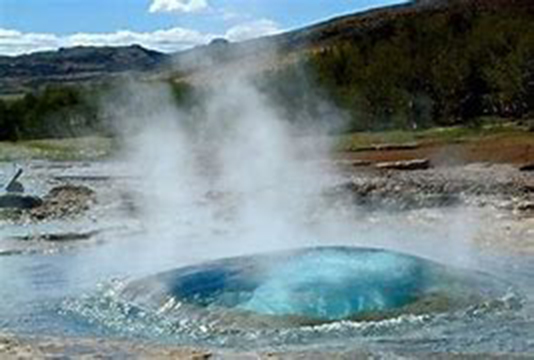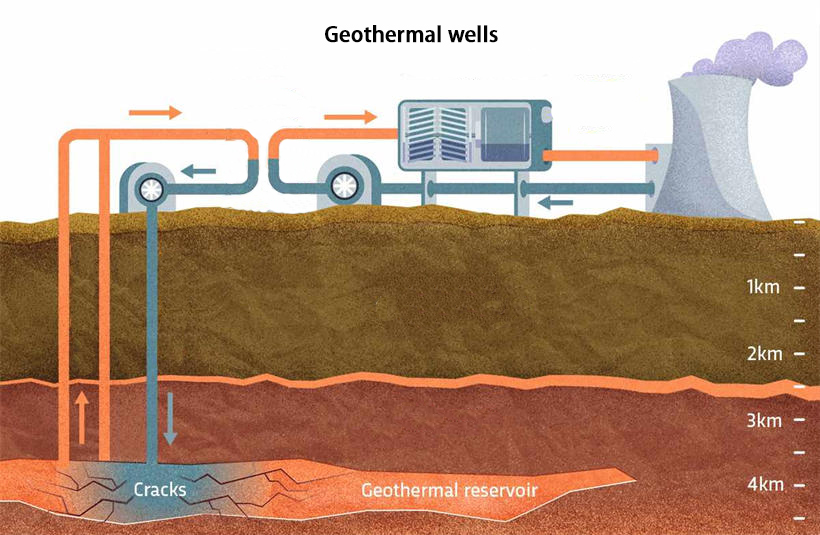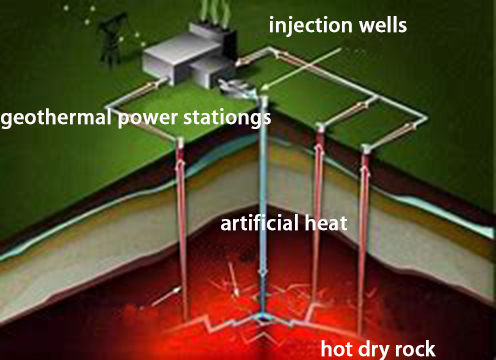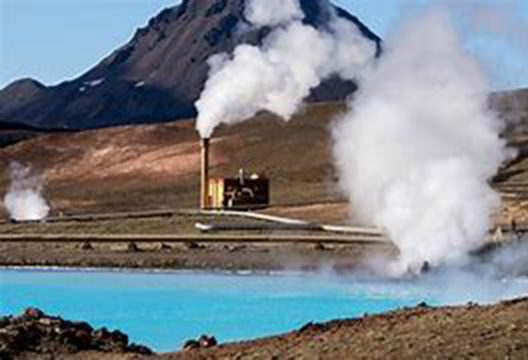Geothermal and geological exploration solutions
Distributed fiber optic temperature measurement geothermal monitoring
Geothermal energy, as a renewable energy source, has broad prospects for applications including geothermal heating, geothermal power generation, and utilization of hot springs. In the development of geothermal energy, understanding the distribution of underground temperatures is crucial for determining temperature gradients in thermal reservoirs, predicting heat conduction performance, and assessing the exploitable potential of geothermal resources.

Traditional methods for geothermal temperature monitoring include well logging, temperature sensors, and underground temperature observation wells. However, these methods are often limited to single-point measurements and localized monitoring, unable to provide comprehensive and continuous underground temperature data.
Distributed fiber optic temperature sensing technology enables comprehensive monitoring of underground temperature distribution by deploying optical fiber sensors along the fiber. Specifically, the optical fiber sensor transmits optical signals through the fiber to the measurement unit, and by analyzing the reflection and scattering characteristics of the optical signals, the temperature at the location of the fiber can be inferred.

The solution for distributed fiber optic temperature monitoring in geothermal applications includes:
1.Fiber Deployment: Optical fibers are installed in the geothermal area to cover the underground areas of interest. Fibers can be laid along geothermal wells, underground water sources, or other relevant underground structures. The fiber deployment is designed according to specific requirements to ensure effective monitoring of temperature changes in the target area.
2.Real-time Temperature Monitoring: Optical fiber sensors continuously monitor the underground temperature by measuring temperature changes in the fiber. This technology provides high-resolution temperature data for detailed temperature analysis and monitoring.
3.Data Acquisition and Analysis: The temperature data from the fiber sensors are collected and recorded using a data acquisition system. Professional data analysis software is then used to process and analyze the data, providing insights into temperature distribution, trends, and potential issues in the geothermal area.
4.Early Warning and Alarms: The system can automatically trigger warnings or alarms based on preset temperature thresholds, allowing prompt actions to be taken when temperature anomalies exceed the set range. This helps prevent potential issues and ensures the safe operation of the geothermal system.
5.Remote Monitoring and Control: The distributed fiber optic temperature monitoring system can be connected to a remote monitoring platform, enabling operators to remotely monitor underground temperature data in real-time. This allows for immediate awareness of the temperature status of the geothermal system and timely response even when not on-site.

By implementing a distributed fiber optic temperature monitoring solution for geothermal temperature monitoring, continuous and high-resolution monitoring of underground temperatures can be achieved. This solution provides accurate temperature data for various applications, such as geothermal energy development, geothermal research, and environmental monitoring. It assists in optimizing the design and operation of geothermal systems and enhances the efficiency of geothermal resource utilization.






